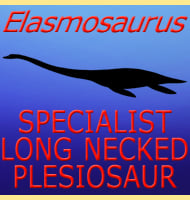Makhaira
In Depth Makhaira is a genus of pliosaur that lived in waters that once submerged parts of Russia during the early Cretaceous. Due to lack of fossil material, little is known about the overall details of Makhaira. But these remains seem to have come from a small to medium sized pliosaur. The known teeth of … Read more
